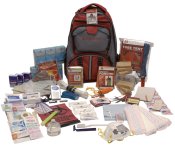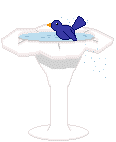Shopping - Gift Ideas



Pink Flamingo
Audubon, John James
Buy this Art Print at AllPosters.com
Framed Mounted
DVDs - 3 discs
A work of art. A global look at the winged species, focuses on bird behaviors.
DVD
An awe-inspiring, critically acclaimed documentary of migrating birds through 40 countries and every continent.

Guardian Deluxe Survival Kit

Guardian Deluxe Survival Kit
|
|
- Sparrow, finch: When observing it's best to make a small amout of noise such as a very low whistle tune. It seems that the birds interpret your quietness as a stalking behavior. So by making a small amount of noise it breaks that "stalking feeling."
- Sparrows and finches don't mind you observing them when you are in plain sight.
- Dove are intimidated by direct eye contact. They seem to freeze and then fly. Before this happens break eye contact and step backwards gently.
- Birds tend to interpret side to side movement as a stalking move.
- Sparrows and finch like monotonous-type rhythm such as a soft song or soft hand beats patting legs.
- Dove, finches, and sparrows don't mind some activity by people. For instance if a person is involved in working outside, then the birds will come down from trees to feed and water.
- You can get birds use to you by spending time outdoors around them. For instance start out with 10-15 min session. You should keep the hour and place of this activity around the same time and place. It helps if you place some specialty seed out for them. It can take patience but little by little they can get use to you and fly down.
- Each bird variety seems to compliment the other.
For instance a few sparrows and finch scope out the landscape and are usually the first to land. Then more sparrows and finches land. Next the dove land followed by even more sparrows and finches. It seems that the presence of the dove gives the sparrows and finches a greater sense of safety. Then the scrub-jay comes down and many of the sparrow and finches fly up for a bit but return back down.
Note: Although the scrub-jay is a bit intimadating to the other birds, the scrub-jay is very good at spotting danger and alerting other birds. Example: if there is a cat nearby the scrub-jay will squawk sounding his alarm until danger is past(cat goes away). In some cases the bluejay will fly down and peck the cat.
- Birds can get use to specific noises, if they hear them on a regular basis. For instance at first small noises like coffee grinding, refrig closing can scare birds. But they can get use to it.
- Birds (sparrows and finches) gather in the trees and there is a strategy to it.
They choose and gather in an area (tree) that aligns up with where they will be flying to (landing).
Some times you can see one or two birds fly reconnaisance to check out the area (size up the feed, the safety). Then other birds will come down usually in groups. However, there seems to always be some birds that stay up in the tree to watch over things. Then others take their place (switch off).
- Sparrows and finch like to bathe in shallow water. It's best if you have a bird bath where you keep the water level low. Some like it as low as 1 inch, others as high as about 1 1/2 inches.
- Dove like water trays which are on the ground. They also seem to like shallow water.
- Finches, sparrows and dove all like a ground feeder. They use low-sided, flat feeders which they can stand in. The bottom should be rough so they can stand in them.
- Birds will eat out of a replaceable cone-type ground feeder (even dove). To train dove to eat out of this type cone feeder, put their favorite feed only in this feeder.
- Each time you introduce a new feeder, it can take a few days for the birds to get use to it.
- It is best for the safety of the birds to place feeders and water away from bushes --cats can be lurking there. Exception: A few birds species like to eat from a feeder and water bowl close to bush cover (example: magpies).
- Birds like clean feeders, water bowls and bird baths. You can observe their increased activity during and following a major cleanning. Example: after washing down cement, water sources, feeders and bird baths: the birds begin gathering, watching, singing, flying down, splashing in the bird baths, filling up feeders, pecking around, flying from feeder to feeder in a happy frenzy. It can be a real show of anticipation and appreciation.
- Theory: At first Birds tend to identify a person by the clothing they wear. So if you wear the same combination of clothing around them, then it will help to create an bonding identification sooner. For instance this worked well with my father around his racing pigeons. He always wore a blue workshirt and jeans around the pigeons. I am not saying this is what made his pigeons the best racing pigeons, but perhaps it was a factor in bonding with them. And a factor of his racing pigeons winning a majority of races --wanting to return home.
- Tip: Whistle after placing food out. The birds will get use to your whistle and learn to fly down soon after you whistle.
- Birds love the sound of water running. When water is running birds will come down. If you have a water fountain running you will have more bird visitors and they will stay longer. Birds will even come down when you run your own water from your sink.
- Birds can get used to your eating times or the sounds of eating ( utensils upon plates - similar sounds to birds pecking while feeding).
- Birds like sunshine. Watch for an increase in activity when the sun shines. Birds especially like to bathe when the sun shines bright.
- Birds like music. Among observed favorite songs/music
(1)Sugartown by Nancy Sinatra (2) Everyday by Buddy Holly (3) Raining in my heart by Buddy Holly (4) Que Sera Sera by Doris Day (5) San Antonio Stroll by Tanya Tucker
Note: these are songs that while playing birds tend to fly down or stay down longer. Play the music a few days in a row, and each song 2 or 3 times in a row. Also best to play around feeding times.
Bird watchers wish list
Gifts

|
|









